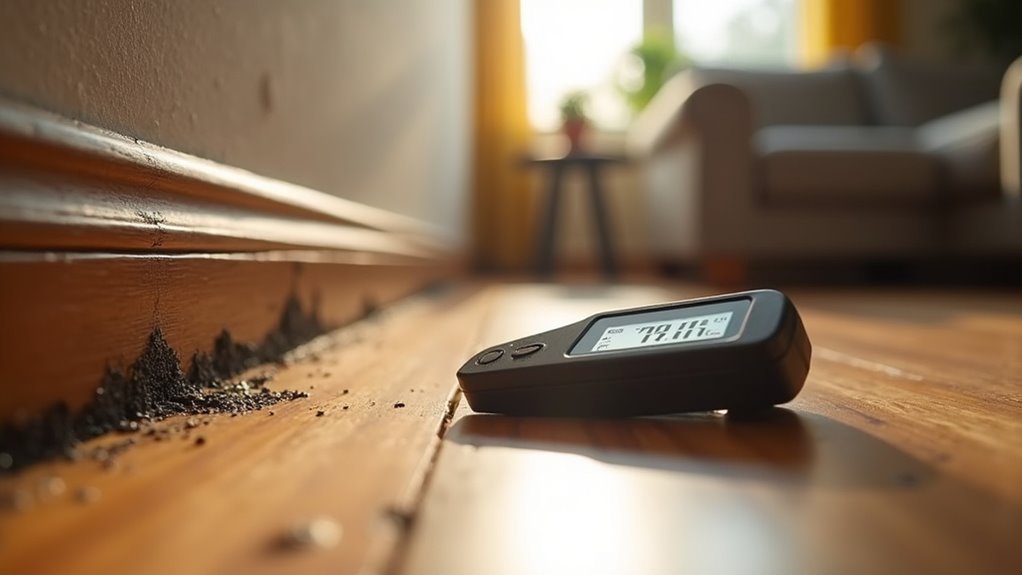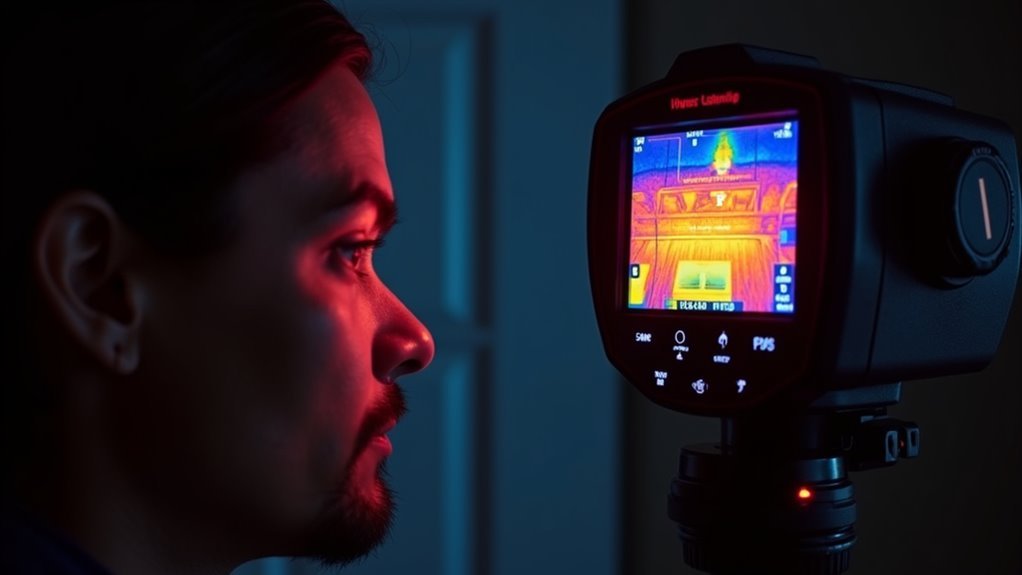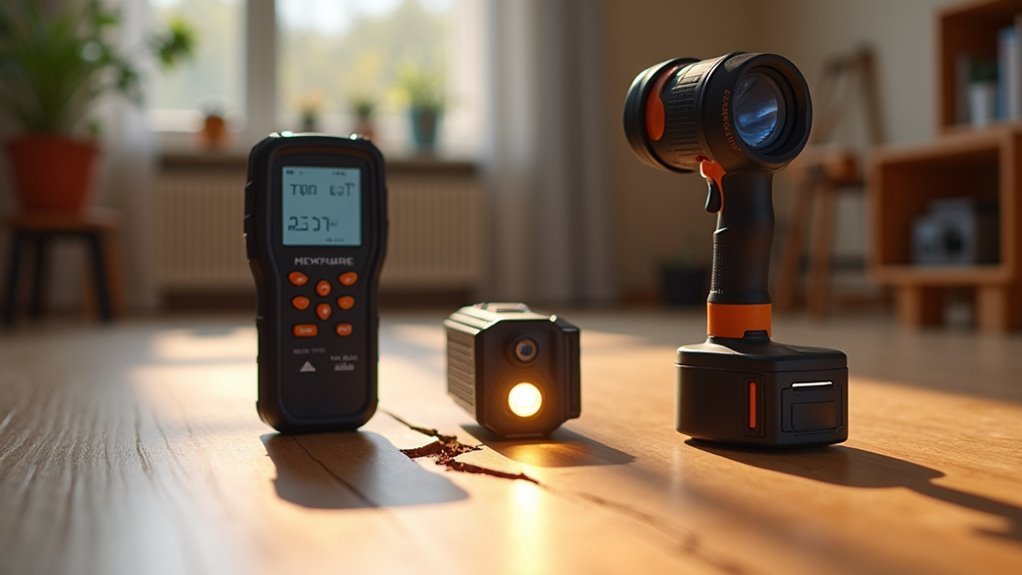You’ll need three essential tools to catch termite infestations early: moisture meters, flashlights with visual inspection tools, and thermal imaging cameras. Moisture meters detect readings above 20% that signal termite-friendly conditions, while flashlights and telescoping mirrors help you spot activity in dark, hard-to-reach areas. Thermal imaging cameras reveal hidden infestations through temperature variations without damaging your walls. Combining these detection methods increases your accuracy and helps you take proactive measures before extensive damage threatens your home’s structure and value.
Moisture Meters for Identifying Problem Areas

When moisture levels in your home exceed normal ranges, termites and other wood-destroying pests find ideal conditions to establish colonies.
Moisture meters help homeowners and property managers identify these problem zones before termite infestations develop. Pin-type meters provide direct readings, while pinless versions allow non-invasive assessment of larger areas during your visual inspection.
Pin-type and pinless moisture meters enable early detection of problem zones before costly termite infestations take hold.
Normal moisture levels range from 5-10% in heated areas and 12-19% in unheated spaces. Readings above 20% indicate potential termite activity and require immediate attention.
Take measurements every few feet in suspect areas to pinpoint moisture problems accurately.
High moisture often signals underlying leaks or water intrusion that creates conducive environments for pests. Regular monitoring helps you detect signs of damage early, making moisture meters essential tools for effective pest management and termite detection strategies.
Flashlights and Visual Inspection Tools
Since termites prefer dark, undisturbed areas like crawl spaces, basements, and wall voids, you’ll need proper lighting tools to conduct thorough inspections. Flashlights are essential for illuminating these spaces and spotting hidden termite colonies, mud tubes, and signs of damage like frass.
| Tool | Purpose |
|---|---|
| Flashlights | Illuminate dark areas to spot termite activity |
| Telescoping mirrors | Inspect high ceilings and beams without scaffolding |
| Pry bars | Gently open wooden structures for damage assessment |
| Moisture meters | Measure wood moisture levels above 20% |
Visual inspection tools enhance early detection when combined with proper technique. The pest control industry relies on these basic tools because they help identify entry points and termite damage before infestations spread. Regular termite inspection using these tools prevents extensive property damage.
Thermal Imaging Cameras for Hidden Infestations

Thermal imaging cameras represent a significant advancement in termite detection technology, allowing you to identify hidden infestations that visual inspections can’t reveal.
These devices detect infrared radiation, helping you visualize temperature variations within walls, floors, and ceilings where termites might be active. This non-invasive method lets you pinpoint problem areas without damaging your structure.
The cameras reveal warm spots associated with moisture intrusion from termite activity, enabling you to take proactive measures before extensive damage occurs.
The critical data from thermal imaging enhances inspection effectiveness and informs your termite control strategies. For homeowners, this technology works best alongside other detection methods, as it identifies moisture issues and temperature anomalies that often correlate with termite presence.
Frequently Asked Questions
Is There a Tool to Check for Termites?
Yes, you can use moisture meters to detect high moisture levels indicating termite activity. You’ll also find borescopes, acoustic emission devices, and thermal imaging cameras effective for spotting termites in hidden areas.
Can I Do Termite Prevention Myself?
You can definitely handle termite prevention yourself by conducting regular visual inspections, maintaining proper drainage, sealing cracks, monitoring moisture levels, and installing baiting systems around your property’s perimeter.
How to Figure Out Where Termites Are Coming From?
Start by examining your home’s foundation and wooden structures for mud tubes, which are termites’ highways. Check moisture-prone areas like basements and crawl spaces, then trace their pathways back to outdoor entry points.
What Is the Most Effective Termite Control Method?
You’ll achieve the most effective termite control by combining baiting systems with liquid soil treatments. This dual approach targets foraging termites and creates protective barriers, ensuring thorough colony elimination while preventing future infestations.
In Summary
You’ve got three powerful tools at your disposal to catch termite problems early. Start with moisture meters to identify vulnerable areas where termites thrive. Use flashlights for thorough visual inspections of dark spaces and wooden structures. If you suspect hidden damage, thermal imaging cameras will reveal temperature differences that indicate active infestations. Don’t wait until it’s too late—regular monitoring with these tools will save you thousands in repair costs.





Leave a Reply